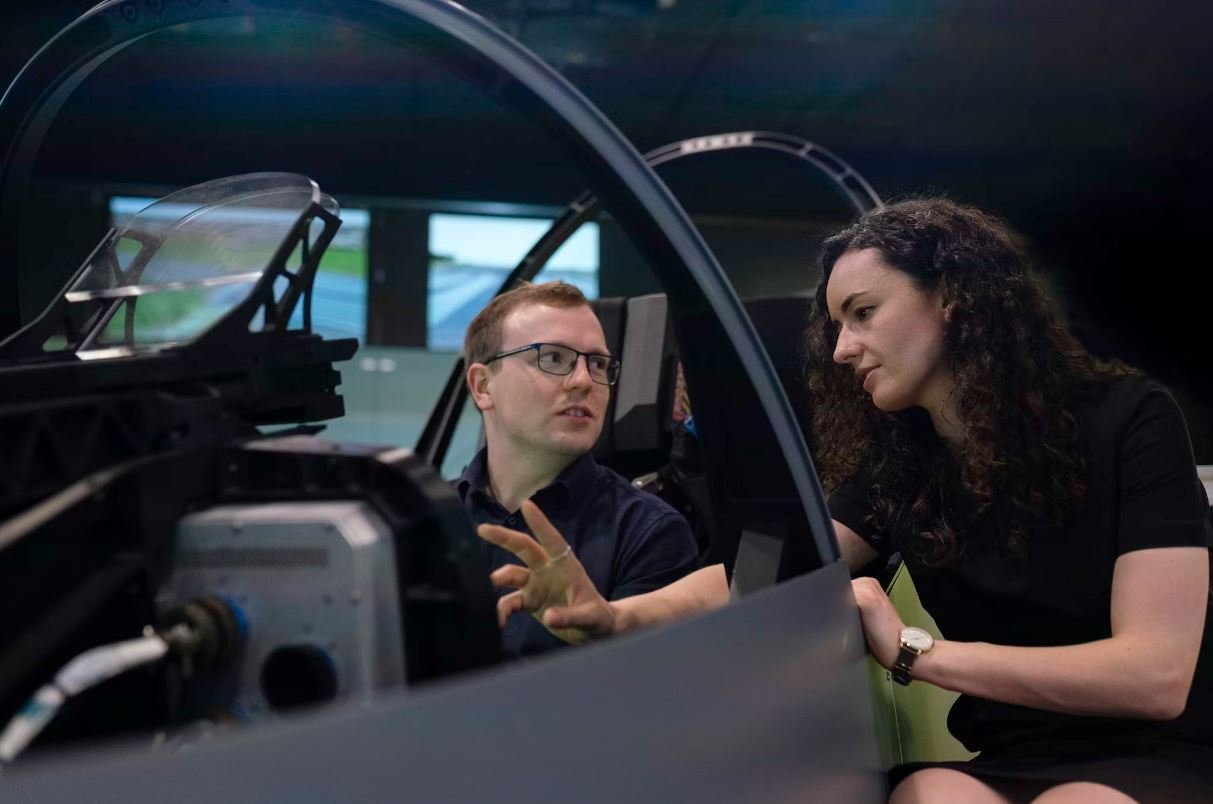AI vs ML vs Deep Learning
In today’s technology-driven world, terms like Artificial Intelligence (AI), Machine Learning (ML), and Deep Learning (DL) are becoming increasingly popular. While they are often used interchangeably, they have distinct differences. Understanding these terms and their applications is important for anyone interested in the field of data science and technology. In this article, we will explore the differences between AI, ML, and DL, and how they are shaping the future.
Key Takeaways:
- AI, ML, and DL are related fields, but have different scopes and applications.
- AI refers to any technology that simulates human intelligence.
- ML focuses on algorithms that enable machines to learn from data and improve performance on specific tasks.
- DL is a subset of ML that uses neural networks to mimic the human brain’s structure and function.
The Difference Between AI, ML, and DL
Artificial Intelligence (AI) is a broad term that encompasses any technology that simulates human intelligence. It refers to the development of computer systems capable of performing tasks that would typically require human intelligence, such as speech recognition, decision-making, problem-solving, and even creativity. AI can be further categorized into two types: narrow AI, which is designed to perform specific tasks, and general AI, which aims to mimic human intelligence across various domains.
AI has the potential to revolutionize industries, from healthcare to transportation, by automating tasks and augmenting human capabilities.
Machine Learning (ML) is a subset of AI that focuses on algorithms and statistical models that enable machines to learn from data and improve performance on specific tasks. ML algorithms use historical data to identify patterns and make informed decisions without being explicitly programmed. This ability to learn and adapt makes ML particularly useful in areas like predictive analysis, recommendation systems, and fraud detection.
Unlike traditional programming, ML enables machines to learn from experience and improve their performance over time.
Deep Learning (DL) is a specialized field within ML that draws inspiration from the structure and function of the human brain. It utilizes artificial neural networks with multiple layers, also known as deep neural networks, to process data and extract features. DL algorithms excel at tasks such as image recognition, natural language processing, and speech recognition.
DL’s ability to automatically extract meaningful representations from raw data has revolutionized fields like computer vision and natural language processing.
Comparison Table
| AI | ML | DL | |
|---|---|---|---|
| Definition | Technology simulating human intelligence | Subset of AI focusing on algorithms that enable machines to learn from data | Subset of ML using neural networks to mimic human brain structures |
| Application | Wide range of tasks requiring human-like intelligence | Predictive analysis, recommendation systems, fraud detection | Image recognition, natural language processing, speech recognition |
| Learning Approach | Varies based on the specific AI system | Algorithms learn from data to improve performance | Neural networks learn from large datasets to extract features |
Pros and Cons of AI, ML, and DL
Each of these technologies has its own strengths and limitations, making them suitable for different applications.
- AI:
- Pros:
- Can perform a wide range of tasks that require human-like intelligence
- Has the potential to revolutionize industries and improve efficiency
- Cons:
- Complex development process and high computational requirements
- Ethical concerns regarding job displacement and privacy
- ML:
- Pros:
- Capable of learning from data and making accurate predictions
- Efficient at tackling complex problems and finding patterns in large datasets
- Cons:
- Requires a significant amount of labeled data for training
- May produce biased results if the training data is unrepresentative
- DL:
- Pros:
- State-of-the-art performance in tasks such as image and speech recognition
- Automatic feature extraction reduces the need for manual feature engineering
- Cons:
- Large amounts of labeled data and computational resources are often required
- DL models can be challenging to interpret and explain
Future Trends and Possibilities
The rapid advancements in AI, ML, and DL are transforming various aspects of our lives and industries. We can expect the following trends and possibilities in the coming years:
- Increased integration of AI and ML in various industries, leading to improved efficiency and cost reduction.
- Advancements in DL techniques and hardware accelerating breakthroughs in computer vision, natural language processing, and robotics.
- Continued ethical debates surrounding AI, ML, and DL, with a focus on transparency, accountability, and data privacy.
With AI, ML, and DL, we are witnessing a future where intelligent machines will augment our capabilities and reshape the way we interact with technology. As these technologies continue to evolve, their impact on society and the potential for innovation are boundless.

Common Misconceptions
AI
One common misconception people have is that AI and ML (machine learning) are interchangeable terms. While AI is a broader concept that encompasses the theory and development of computer systems that can perform tasks that would normally require human intelligence, ML is a subset of AI that focuses on enabling machines to learn from data and make predictions or decisions.
- AI and ML have distinct meanings and applications.
- AI aims to replicate human intelligence, while ML focuses on learning from data.
- Not all AI systems rely on ML techniques.
ML
Another common misconception is that ML and deep learning are the same thing. Deep learning is a specific subfield of ML that focuses on the design and training of artificial neural networks with multiple layers. While deep learning has gained significant attention and achieved remarkable results in various domains, ML encompasses a much wider range of techniques and algorithms.
- ML and deep learning are interconnected but distinct.
- Deep learning is a subset of ML that mimics the human brain’s neural networks.
- ML includes various algorithms like decision trees, support vector machines, and clustering.
Deep Learning
A misconception surrounding deep learning is that it is capable of achieving human-level intelligence. While deep learning has shown impressive capabilities in areas such as image and speech recognition, it is far from achieving general intelligence as humans possess. Deep learning models excel in performing specific tasks but lack the overall cognitive capabilities and understanding that humans possess.
- Deep learning focuses on specialized tasks rather than general intelligence.
- Deep learning models require extensive training data for effective performance.
- Deep learning has achieved breakthroughs in areas like natural language processing and computer vision.
Applications
Another misconception is that AI, ML, and deep learning are limited to futuristic robots or autonomous vehicles. In reality, these technologies have diverse applications in various industries. AI is used in voice assistants, fraud detection systems, and recommendation systems, while ML enables personalized ads, credit risk assessment, and email filtering. Deep learning finds applications in image recognition, video analysis, and language translation.
- AI, ML, and deep learning have widespread real-life applications.
- They are utilized in industries like healthcare, finance, and retail.
- These technologies are embedded in everyday software and services.
Limitations
Lastly, a common misconception is that AI, ML, and deep learning are flawless and can solve any problem. While these technologies have made significant advancements, they have limitations. AI systems can be biased or lack interpretability. ML models may suffer from overfitting or require large amounts of data for accurate predictions. Deep learning models can be computationally expensive to train and may struggle with small data sets.
- AI, ML, and deep learning have their own limitations and challenges.
- Biases and ethical concerns can arise in AI systems.
- Data quality and quantity impact the performance of ML and deep learning models.

AI Applications Examples
The table below showcases some real-world applications of Artificial Intelligence (AI) across various industries:
| Industry | AI Application |
|---|---|
| Healthcare | AI-assisted diagnosis and precision medicine |
| Transportation | Autonomous vehicles and traffic optimization |
| Finance | Fraud detection and algorithmic trading |
| Retail | Recommendation systems and personalized marketing |
| Manufacturing | Automated quality control and predictive maintenance |
Key Characteristics of Machine Learning
Machine Learning (ML) is a subset of AI that enables systems to learn and improve from experience. The table highlights some fundamental characteristics of ML:
| Characteristic | Description |
|---|---|
| Supervised Learning | Training models using labeled data |
| Unsupervised Learning | Finding patterns and relationships in unlabeled data |
| Reinforcement Learning | Learning through interactions with an environment |
| Feature Engineering | Selecting and transforming relevant input features |
| Model Evaluation | Measuring the performance and accuracy of models |
Distinguishing Features of Deep Learning
Deep Learning is a subfield of ML that focuses on neural networks with multiple layers. The following table highlights key features and concepts in Deep Learning:
| Feature | Description |
|---|---|
| Artificial Neural Networks | Modeling the structure and function of human brain neurons |
| Convolutional Neural Networks | Specialized for image and video recognition tasks |
| Recurrent Neural Networks | Designed for sequential data and time series analysis |
| Long Short-Term Memory | Handling dependencies in sequential data more effectively |
| Generative Adversarial Networks | Generating new data by competing neural networks |
AI and ML Limitations
Despite their significant advancements, both AI and ML have certain limitations that need to be considered. The following table shows some of these limitations:
| Limitation | Description |
|---|---|
| Data Dependence | Insufficient or biased training data can impact performance |
| Interpretability | Understanding the decision-making process of models can be challenging |
| Automation Threat | Potential job displacement due to automation of certain tasks |
| Security Risks | AI systems may be vulnerable to adversarial attacks |
| Ethical Considerations | Ensuring fairness, privacy, and avoiding bias in AI models |
AI, ML, and DL in Popular Media
The representation of AI, ML, and Deep Learning in popular media often leads to misconceptions. The table below presents common examples:
| Media Representation | Description |
|---|---|
| Human-like AI | Exaggerating AI capabilities to possess human-level intelligence |
| Instant Superintelligence | Portraying AI as rapidly gaining superhuman intellect |
| Generalization from Fiction | Expectations unrealistic due to fictional portrayals |
| Robotic Labor Force | Depicting widespread algorithmic automation in various industries |
| Disruptive AI Revolutions | Overhyping potential impact without considering limitations |
AI, ML, and DL Career Opportunities
Career opportunities in AI, ML, and Deep Learning are expanding rapidly. The table below highlights various roles in the field:
| Role | Description |
|---|---|
| Data Scientist | Analyzing and interpreting complex data sets |
| Machine Learning Engineer | Developing and deploying ML systems |
| Natural Language Processing Engineer | Building AI systems for understanding and generating human language |
| Computer Vision Engineer | Working on image and video recognition tasks |
| AI Ethicist | Addressing ethical considerations in AI development and deployment |
Popular AI and ML Frameworks
Various frameworks exist to facilitate development in AI and ML. The following table presents some popular frameworks:
| Framework | Description |
|---|---|
| TensorFlow | An open-source library for ML and DL in various programming languages |
| PyTorch | Deep learning framework with dynamic computational graphs |
| Scikit-learn | Simple and efficient tools for ML and data analysis in Python |
| Keras | High-level neural networks API for rapid prototyping in Python |
| Caffe | Deep learning framework popular for computer vision tasks |
Important AI, ML, and DL Conferences
Conferences play a crucial role in fostering collaboration and knowledge exchange. The table below showcases some important conferences in the field:
| Conference | Date and Location |
|---|---|
| NeurIPS | December; Vancouver, Canada |
| CVPR | June; rotating locations worldwide |
| ACL | July/August; rotating locations worldwide |
| ICML | July; rotating locations worldwide |
| AAAI | February; rotating locations worldwide |
Artificial Intelligence (AI), Machine Learning (ML), and Deep Learning (DL) are interconnected fields that have gained significant attention in recent years. AI applications span diverse industries, tackling complex problems. Machine Learning, a subset of AI, focuses on using algorithms and statistical models to enable systems to learn and improve from experience. Deep Learning, on the other hand, delves into modeling complex patterns and structures through multi-layered neural networks. While these technologies offer immense potential, it is important to recognize their limitations, consider ethical implications, and correct media misconceptions. As the field continues to evolve, career opportunities arise, and popular frameworks and conferences facilitate advancements in the AI, ML, and DL domains.
Frequently Asked Questions
What is the difference between AI, ML, and Deep Learning?
AI (Artificial Intelligence) is a broad concept that encompasses techniques and algorithms that enable machines to perform tasks that would generally require human intelligence. Machine Learning (ML) is a subset of AI that focuses on algorithms and models that allow computers to learn and make decisions based on data without explicit programming. Deep Learning is a subset of ML that involves neural networks with multiple layers of abstraction, enabling them to automatically learn representative features from raw data.
How does AI work?
AI utilizes various techniques such as machine learning, natural language processing, and computer vision to process and analyze large amounts of data. It uses this information to identify patterns, make deductions, and make predictions or decisions. AI systems can be trained through supervised learning, unsupervised learning, or reinforcement learning to optimize their performance.
What are the applications of ML?
ML has a wide range of applications in various industries. It is used for image and speech recognition, natural language processing, recommendation systems, fraud detection, financial forecasting, healthcare diagnostics, autonomous vehicles, and much more. The applications of ML continue to expand as companies find new ways to leverage the power of data and algorithms.
How does Deep Learning differ from traditional ML?
Deep Learning differs from traditional ML in its ability to automatically learn high-level abstractions from raw data. Traditional ML algorithms often rely on manual feature engineering, where humans must manually extract relevant features from the data. Deep Learning, using neural networks with multiple layers, can automatically learn these complex features, which can lead to better performance in certain cases.
What are the challenges in implementing AI, ML, and Deep Learning?
Implementing AI, ML, and Deep Learning systems can be challenging due to various factors. Some challenges include acquiring and processing large amounts of high-quality data, ensuring the privacy and security of data, designing and training effective models, managing computational resources, interpreting and understanding the output of AI systems, and addressing ethical considerations, such as bias and fairness.
What are some popular AI frameworks and libraries?
There are several popular frameworks and libraries available for AI development. Some of the well-known ones include TensorFlow, PyTorch, scikit-learn, Keras, Caffe, and Theano. These frameworks provide a collection of tools, algorithms, and APIs that simplify the process of developing and deploying AI models.
Is AI going to replace humans in the workforce?
While AI has the potential to automate certain tasks and processes, it is unlikely to completely replace humans in the workforce. AI technologies are designed to augment human capabilities, improve efficiency, and assist in decision-making. Many experts believe that AI will create new job opportunities and require humans to acquire new skills to work alongside AI systems.
How are AI, ML, and Deep Learning impacting society?
AI, ML, and Deep Learning are transforming various aspects of society. They are driving innovations in healthcare, transportation, finance, customer service, and many other industries. However, there are also concerns around the ethical implications of AI, such as privacy, security, bias, and job displacement. Balancing the benefits and risks of these technologies is essential for their responsible and beneficial integration into society.
Can AI and ML algorithms be biased?
Yes, AI and ML algorithms can be biased. Bias can occur due to different reasons, including biased training data, flawed model design, or biases in the data itself. These biases can lead to unfair outcomes, discrimination, or perpetuation of existing societal biases. It is crucial to address and mitigate biases in AI and ML systems through careful data collection, algorithmic design, and ongoing evaluation.
What is the future of AI, ML, and Deep Learning?
The future of AI, ML, and Deep Learning is promising. These technologies will continue to advance and have a significant impact on various domains. We can expect continued improvements in AI models’ accuracy, efficiency, and interpretability. Additionally, there will be advancements in areas such as explainable AI, federated learning, ethical guidelines, and regulations to ensure the responsible and safe use of these technologies.




